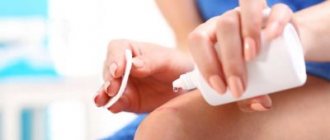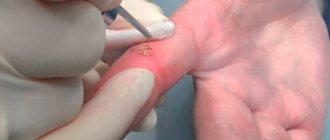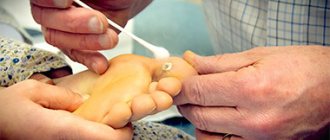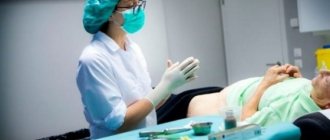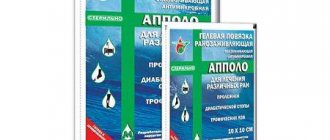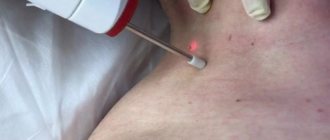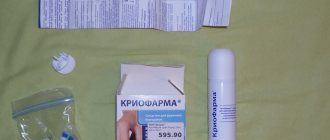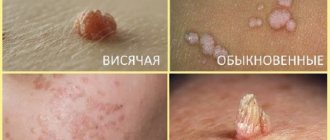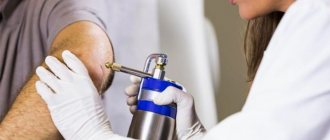Why is caring for a wart after cauterization with nitrogen important?
Human papillomavirus is quite common . But not in all cases it is characterized by the appearance of warts on the body. Removing the growth is a mandatory procedure, as it causes significant discomfort.
Cryodestruction involves directing liquid nitrogen to the wart using a special instrument.
Under the influence of low temperature, the growth cells die off . Its color becomes white by the end of the procedure. The total duration of medical procedures does not exceed one minute.
A bubble appears in the place where the wart was previously located. Swelling forms in the adjacent area (plantar or some other area). Treatment of the wart after cauterization with nitrogen is required. Without proper care, the wound can become infected. There is also a high risk that an unsightly scar will remain at the site of the wart. In some cases, a repeat cryodestruction session may be required.
The level of discomfort during cryodestruction depends on the person’s pain threshold. There may be a burning and tingling sensation in the area of the wart . In some medical institutions, it is customary to use painkillers. Before performing cryodestruction, it is advisable to determine the nature of the appearance of the wart. Removal is carried out only with the permission of the attending physician.
What to do with the consequences of wart removal
Often, after eliminating a growth, a person is faced with the consequences of the procedure. Sometimes the symptoms that arise look unnatural and make you wonder whether everything is okay with the removed wart, or whether there is a need to urgently consult a doctor. After cauterization with liquid nitrogen, the patient can pay attention to changes in the shape, color and density of the growth. In order not to aggravate the healing process, a person needs to understand what actions should be taken and which ones it is better to refrain from.
A blister has appeared at the wound site, can it be pierced?
The appearance of a bubble is a normal reaction of the body to the influence of various types of external stimulus, in this case liquid nitrogen. This occurs with burns or excessive friction. Such a bubble filled with intercellular fluid is a barrier to the penetration of harmful microorganisms. As a rule, it gradually increases in size. This brings some discomfort. There may be some minor pain and pressure. It will burst on its own when the skin “ripens”.
If a water blister appears after removing a wart with liquid nitrogen, it is strictly not recommended to pierce or peel off the skin of the blister. There is a high probability of a streptococcal or staphylococcal infection entering the wound, due to which an inflammatory process will begin and pus will begin to accumulate.
The wart has turned black
The growth may turn black after exposure. This refers to normal phenomena. If the wart turns black after exposure to nitrogen, this indicates a breakdown in cellular connections. Black color indicates imminent death. You should not try to scrape off the growth until it falls off on its own. In this way, you can damage the skin or provoke a bacterial infection.
What to apply?
The bubble formed at the site of the wart must be protected from mechanical damage. You should also exclude the possibility of water getting on it.
Damage to new layers of epithelium causes increased growth of connective tissue. As a result of this, scars form on the skin. Step-by-step wound care instructions include the following:
- Treat wounds with a solution of salicylic acid or potassium permanganate, twice a day.
- After the crust falls off, anti-inflammatory therapy is used in the form of transdermal agents (Solcoseryl, Methyluracil, Hydrocortisone ointment).
- To prevent scarring, Contractubex gel is most often used.
During the wound healing process, it is strictly prohibited:
- Cover the wound with a plaster or bandage it.
- Expose to ultraviolet light.
- Apply cosmetic products to the damaged area.
- Touch the wound with dirty hands.
- Tear off the crust.
- Visit saunas, swimming pools and baths.
Important! During treatment, you should temporarily limit close contact with other people in order to prevent the spread of the virus.
Now you know what to do after cryodestruction.
Fibroepithelial polyps
Fibroepithelial polyp (papillomas) are benign neoplasms on the skin in the form of wart-like growths, rising above the level of the skin, with a wide base or on a stalk, grayish or brown in color, with a diameter of 0.3 - 1.5 cm or more, round or irregular in shape. Most often they are located on the neck (along the lateral surface) and in large folds. The surface of papillomas is villous or covered with easily detachable horny masses. Fibroepithelial polyps occur in 50% of the world's population, and in women during pregnancy they increase in number and size. In pregnant women, these tumors often appear on the nipples, which is dangerous for breastfeeding for the unborn child.
How long does it take to heal?
On average it takes two weeks to heal . The blister bursts approximately 5-7 days after cryodestruction. The dead growth just needs to be cut off with forceps. Then a crust forms. It drags on for at least a week. The length of the rehabilitation period is greatly influenced by the size of the wart, the professionalism of the doctor and compliance with the rules of wound care.
If an anesthetic is used during cryodestruction, it is necessary to first test for allergic reactions.
The skin's ability to regenerate varies from person to person . The healing time may be prolonged if complications arise. In this situation, timely assistance from a specialist is required.
Possible complications
Even if all safety measures are observed, there is a possibility of developing unpleasant complications after cryodestruction. Damage to the bubble formed at the site of the papilloma can lead to an inflammatory process.
The wound becomes vulnerable, so caring for it in this case should become more meticulous. You should frequently treat the injury site with any antiseptic. The presence of pus in the wound is a reason to consult a doctor .
Sometimes a pigment spot appears at the site of the growth after healing. It occurs as a result of exposure to ultraviolet radiation during the healing process. To prevent its occurrence, you should adhere to the following principles:
- Avoid visiting the solarium.
- Do not expose the wound to the sun.
- After the crust falls off, you should use sunscreen.
The incompetence of the doctor involved in cryodestruction can lead to the wart appearing again in the same place. This happens when the roots of the growth remain deep in the skin. To avoid such situations, it is recommended to carefully choose a specialist.
Reference! Damage to the crust formed at the site of the papilloma can cause bleeding. In this case, you need to stop the bleeding, and then treat the surface of the wound with an antiseptic.
Consequences
As with other methods of physical influence, complications may arise after cryodestruction. They develop infrequently, but the possibility of developing undesirable consequences cannot be completely excluded.
Exceeding the force and time of impact on the formation tissue can lead to a burn, and subsequently to the formation of a rough scar. Therefore, you need to be very responsible when choosing a clinic and a doctor. The accuracy of cauterization directly depends on the professionalism and practical experience of the doctor.
Failure to carry out aseptic treatment during the recovery period can lead to another complication - wound infection. Therefore, responsibility for the result lies not only with the doctor, but also with the patient.
Photo
And this is what a wart looks like in the photo before and after the cryodestruction procedure:
Contraindications for cryodestruction
Cryodestruction is very popular. It stands apart from other wart removal methods due to its many advantages. These include the following:
- exposure to low temperatures does not allow the virus to spread throughout the body, thereby preventing the appearance of new papillomas;
- no bleeding occurs during cryodestruction;
- when the wound heals properly, there is no pain;
- the crust formed at the site of the wart protects the wound from infection.
Despite the effectiveness of the procedure, not everyone can resort to its help. You should first familiarize yourself with the contraindications. These include the following:
- Pregnancy and breastfeeding.
- Epilepsy.
- Hypertension.
- Exacerbation of chronic diseases.
- Infectious diseases.
Important! Cryodestruction is not carried out even if there are any skin lesions near the wart. It is necessary to wait for them to heal, only then can you begin to remove the growth.
Is the procedure painful?
The degree of pain depends on the individual characteristics of the person, as well as on the size of the wart that will be treated with nitrogen. The sensation of touching nitrogen on the skin is similar to a cold metal object.
A person undergoing nitrogen cauterization may experience the following unpleasant sensations:
- Mild tingling sensation;
- Feeling of cold at the site of nitrogen exposure;
- Numbness of the area where the wart is located;
- A burning sensation at the site of nitrogen exposure most often occurs at the end of the procedure.
For children, it is recommended to use ointments with an analgesic effect; adults carry out such procedures only at their own discretion.
In some cases, discomfort may last for several days, depending on the size of the formation and the duration of exposure of the skin surface to nitrogen.
How do they usually react to the procedure?
People's reactions to liquid nitrogen exposure vary. In most cases, the impressions are positive. Painful sensations occur in people with a low pain threshold or in children. In rare cases, cryodestruction is repeated. This is due to the low level of the human immune system.
Scars at the site of a wart after cryodestruction appear quite rarely. Most often, their presence is due to improper wound care. The main advantages of the procedure include its affordability.
Many people consider the appearance of warts on the skin to be an insignificant drawback. But treatment of the main symptom of the papilloma virus should be taken seriously. Any wrong move can lead to serious consequences, one of which is cancer.
Top
What is better to remove warts: laser or nitrogen?
Removal of warts with a laser occurs under the influence of high temperatures, and with liquid nitrogen - at low temperatures. Both procedures are quite effective. Let's list all the components of these wart removal methods.
| Laser removal | Liquid nitrogen removal |
| painless (can sometimes cause discomfort); | painless operation, but sometimes local anesthesia may be needed; |
| does not injure healthy skin around the wart; | may affect healthy skin around the wart; |
| good for removing warts on visible areas of the skin; | It is better not to remove warts on visible and sensitive areas of the skin; |
| few contraindications; | has a number of contraindications; |
| removal takes about two minutes per wart; | it takes 1 to 2 minutes to remove one wart; |
| It does not require special care; | It does not require special care; |
| rapid skin restoration; | The healing process takes quite a long time (can last up to 1 year); |
| absence of blood during the procedure; | absence of blood during the procedure; |
| removal of tumors in one session; | in rare cases, a scar may form; |
| no scar formation; | several sessions may be needed; |
| the ability to send material for histology; | inability to send material for histology; |
| quite high cost. | acceptable price. |
It is impossible to say which method is better. Each has its pros and cons. Everything is very individual. Therefore, it is up to you to decide which method you want to use.
